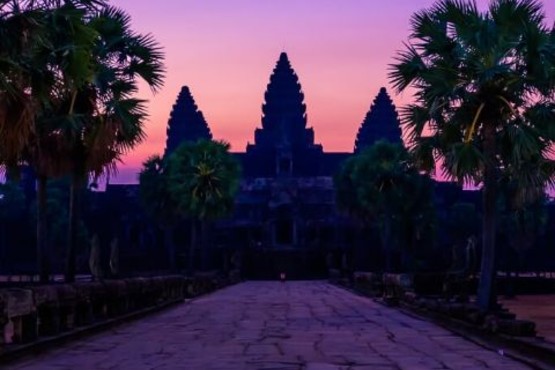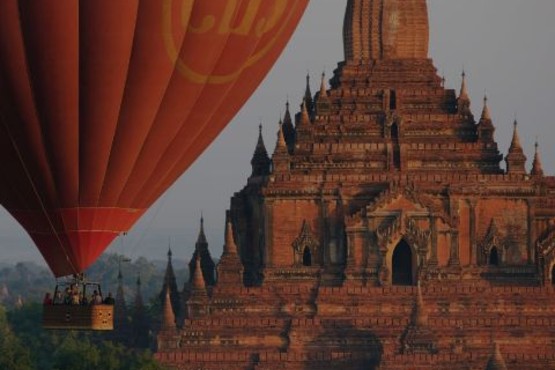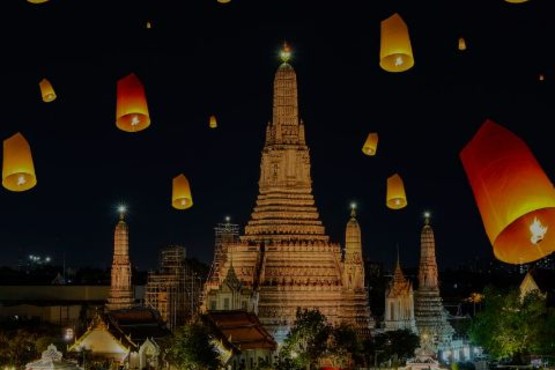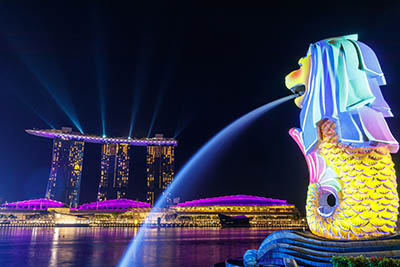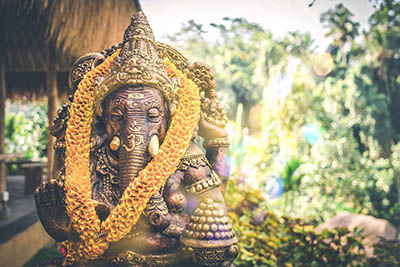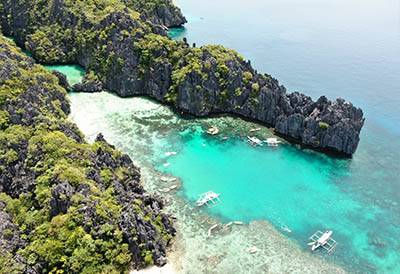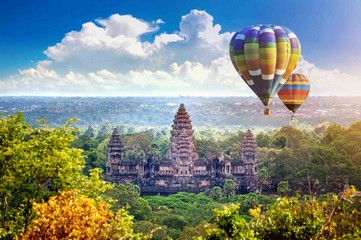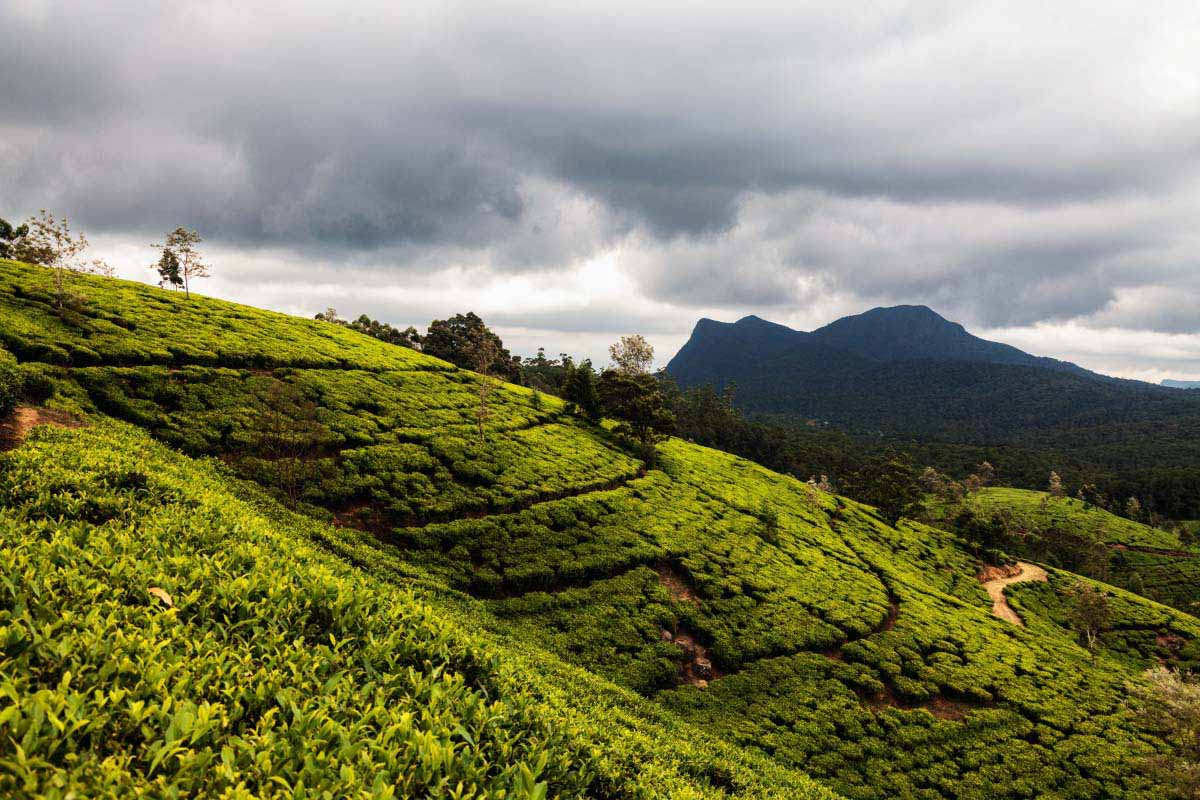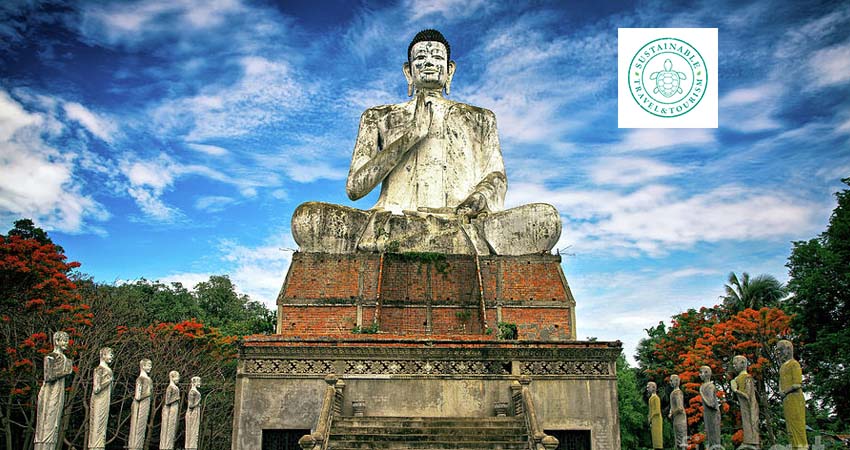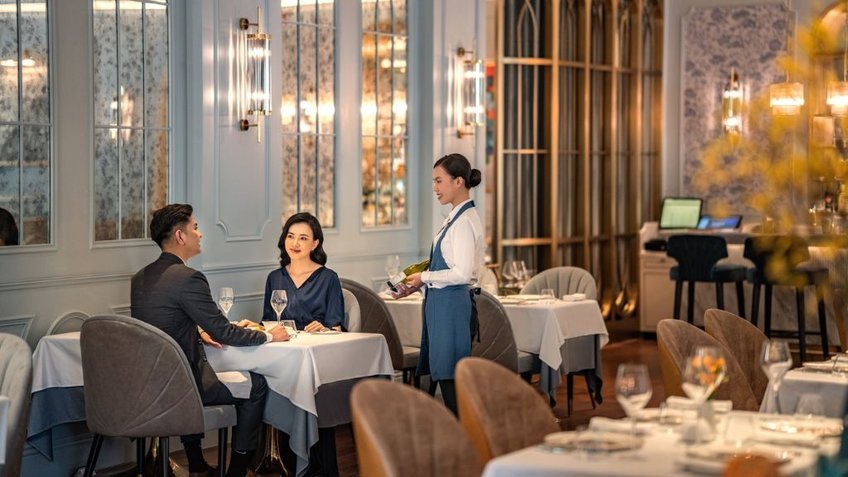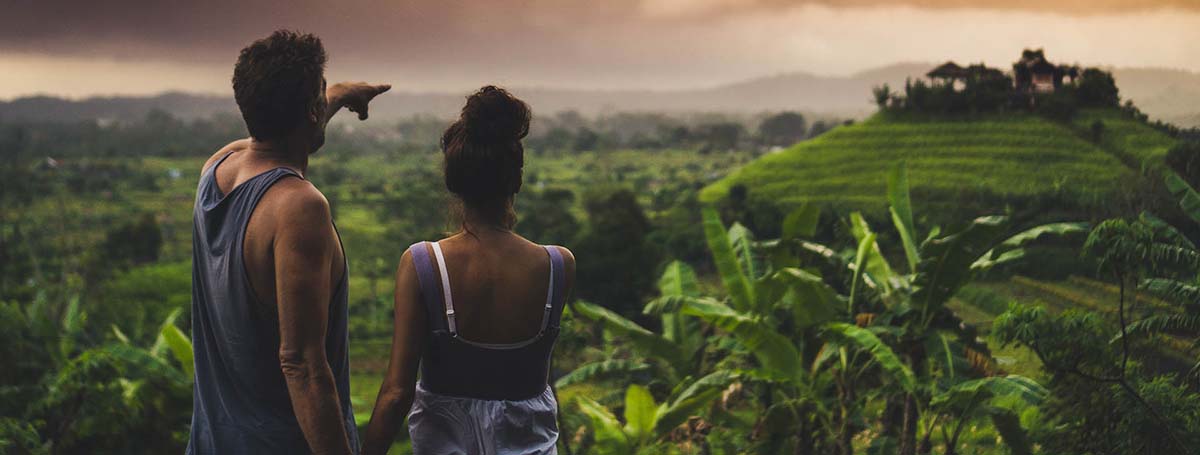Explore Our Indonesia Tours
Indonesia is the world’s largest archipelago with over 17,000 islands, spanning from South East Asia across to Oceania. It is a country of beautiful beaches, breathtaking views, incredible volcanoes, inspiring wildlife, and exquisite food. With Indonesia tours, you can discover tourist sites including attractions from historical to natural to cultural. From Bali’s spiritual side to Java’s otherworldly volcanic landscapes, Indonesia offers a myriad of experiences that are both unique and unrivaled. Our tailored-made holiday tour packages in Indonesia will help you discover all the wonders of this magical country safely and with expert local guides.
Come and discover wonderful Indonesia with Lux Travel DMC today! Our travel experts will always be there to help you bring an exotic journey of your dreams.
Explore Our Indonesia Tours
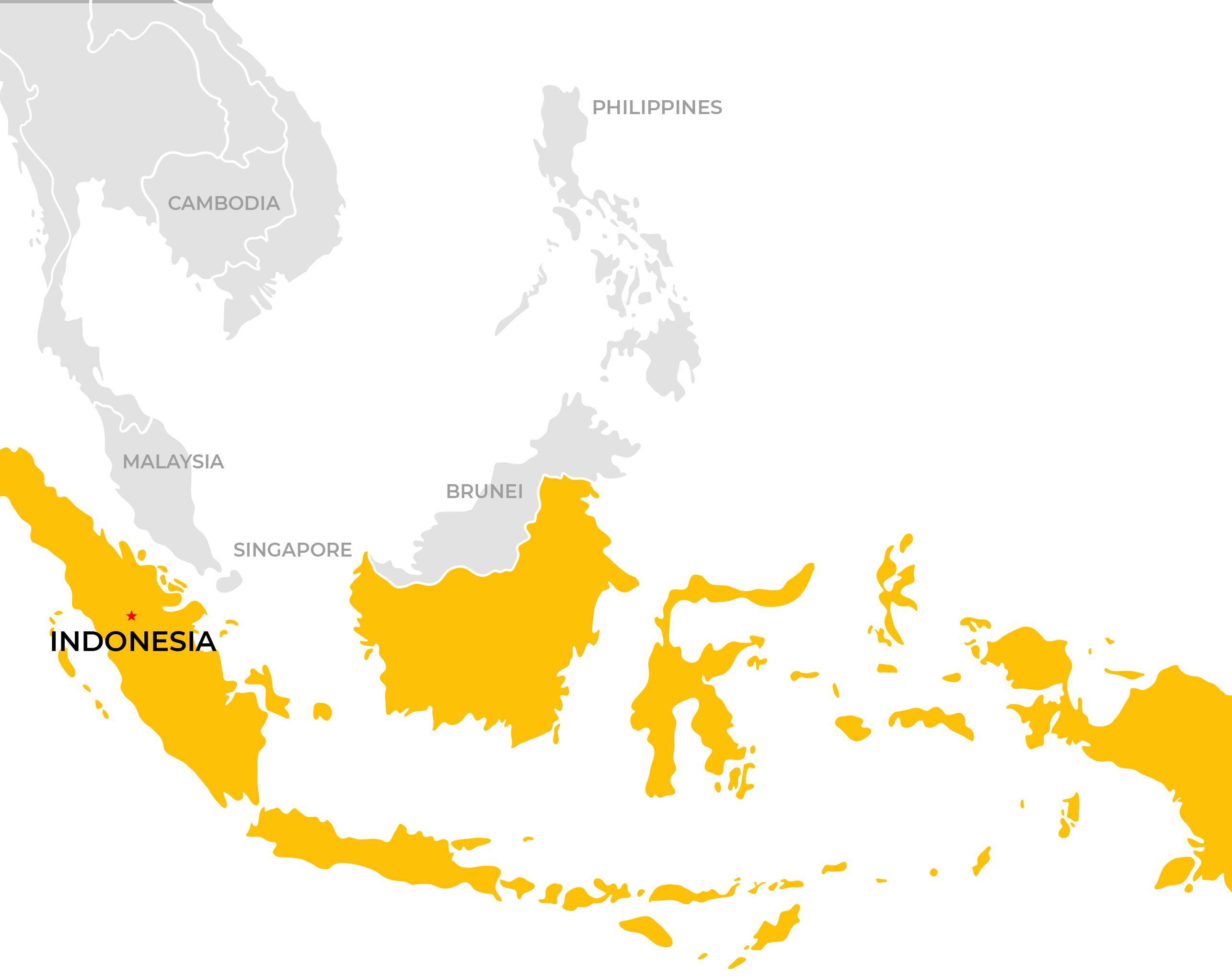
Our Luxury Indonesia Tours

Travel Guide
1. When is the best time to visit Indonesia?
Due to temperatures hovering around 28 degrees Celsius, Indonesia is a year-round destination for traveling.
The best months to visit Indonesia are months of the dry season including May, June and September. You’ll get clear days in the islands without crowds or expensiveness as in peak season (July and August). Besides, it is not as hot and humid so ideal for long hikes and cycle rides.
The dry season is wonderful for diving and surfing, but it also depends on which part of the archipelago you’re visiting. The suitable months for diving off the coast of Bali, Lombok and Komodo National Park are April to September, while the best time for diving around Maluku and Papua are from October to April.
2. Where to stay in Indonesia luxury?
1. AMANJIWO, BOROBODUR, JAVA
Amanjiwo has a view of the mystical stupas of Borobudur which is the world’s largest Buddhist temple and a Unesco World Heritage Site. Here, guests can pay a visit to serene Borobudur, bustling Yogyakarta or any number of vibrant villages. Béides, travelers will have relaxing time at Amanjiwo’s spa, the 40 m (130 ft) pool, and the majestic open-air restaurant.
2. NIHI SUMBA, SUMBA ISLAND
Nihi Sumba is awarded the #1 Hotel in the World by Travel + Leisure magazine in 2016 and 2017. The hotel is located on Indonesia's remote Sumba island. Nihi Sumba has 28 villas crafted from native teak with rattan feature expansive outdoor rooms and private plunge pools. Nihi Sumba is for travelers who seek a new type of luxury: activity-driven experiences, cultural immersion, freedom and fun. Here, you can go on a spa safari, go horseback riding or swim beneath a waterfall. Dining experiences include beach picnics, dinner under the stars and weekly themed events.
3. AMANKILA, BALI
Amankila is a secluded seaside resort overlooking the Lombok Strait and managed by Aman Resorts, the world’s most exclusive hotel brand. The 34 free-standing thatched-roof suites offer exceptional views from their hillside locations, and are connected to the resort’s facilities by raised walkways. Guests can relax around the signature three-tiered pool or at the beach club on Amankila’s beach, with its silverblack sands and turquoise waters. The difference of Amankila is that it is situated in Karangasem, which is easy to access to rural countryside, local crafts and the region’s royal past.
4. FOUR SEASONS RESORT BALI AT JIMBARAN BAY, BALI
The resort spreads across 14 hectares (35 acres) of oceanfront in Bali, giving resort guests direct access to the beach right at sea level. The resort contains 147 villas among tropical gardens. The luxurious villas – each with a private plunge pool – terrace down a hillside woven with brilliant flowers and Balinese temples. Here, you can steep yourself in local island culture, unwind with holistic spa treatments and enjoy a wide range of dining options, including the beachfront Sundara restaurant or theatre-style dining is presented in open-air Taman Wantilan restaurant
5. MANDAPA, A RITZ-CARLTON RESERVE, BALI
Fronting the Ayung River near the Ubud jungle, the hotel replicates a traditional Balinese village with rice paddies. Each of the 60 luxury suites and villas features a private outdoor space (some of them with pools) with views of the river or surrounding scenery. Four restaurants serve health-conscious cuisine sourced from the organic garden. Otherwise, you can also arrange a romantic dinner overlooking the river or rice terrace. The spa offers a variety of programs focused on physical and spiritual well-being.
6. BAWAH PRIVATE ISLAND
Bawah Island is a project of love to integrate people with nature and sets the benchmark for future destinations around the region. Taking the route that “less means more”, Bawah Private Island only accepts a maximum of 70 guests at any one time; The 35 safari-style tented villas offer the privacy of your own home but also invite you to enjoy the nature that surrounds Bawah Island.
7. AMANWANA, MOYO ISLAND
Amanwana has set up camp on private Moyo Island, with 20 safari tents amid the rainforest or on the shore. These camps are built with hardwood floors and soaring, air-conditioned canopies sheltering sumptuous daybeds, ensuite bathrooms and net-draped kingsize beds. Visits from friendly macaques and inquisitive deer are not uncommon. Amanwana is also the ideal base for sailing expeditions in search of the Komodo Dragon
8. SIX SENSES ULUWATU, BALI
Six senses Uluwatu offers uninterrupted ocean views from every angle. The resort comprises 103 suites and villas, inspired by local design, embracing nature and offering every creature comfort. The Six Senses Spa features locally inspired specialty treatments, multi-day integrated wellness programs and free morning yoga sessions. The resort features multiple swimming pools, an open air event venue, function space, three restaurants including a chef’s table, a cooking school and an extensive organic garden and farm.
9. ALILA PURNAMA, KOMODO ISLAND
The Alila Purnama is an ideal choice for an exciting cruise in Indonesia. Classing itself as 6 star hotel standard, this floating property provides ultra-modern and relaxing accommodation for up to ten guests. Handcrafted in the traditional style of a Phinisi, the 46 m (150 ft) long Alila Purnama consists of three decks, 4 double deluxe suites and 1 master suite with a private deck. In keeping with Alila’s emphasis on style and sustainability, the furniture throughout the ship is custom-made from teak, rattan and other locally sourced materials from Indonesia.
10. THE OBEROI LOMBOK
The Oberoi Lombok is located on the enchanting Medana Bay, with exclusive beach access and sunset views of Bali’s volcanic Mount Agung. Spanning 24 acres of beautifully landscaped gardens, the resort is abundant with towering indigenous trees, flaming bougainvillea and also boasts a spectacular infinity pool. Accommodation is divided between thatched villas and pavilions, all of which are afforded breathtaking ocean and lush garden views. The resort’s open air, thatched dining spaces serve fine international cuisine, local delicacies and Lombok coffee, complemented by live traditional music and Balinese dance.
3. What are top Indonesia Tourist Attractions?
Here are the top contenders to consider for your Indonesia trip.
Bali
Bali is famous for emerald-green rice terraces and artistic culture. There are plenty of accommodation, shops and bars in the sweep of golden sand lines of Kuta-Legian-Seminyak, contrasting to wilder beaches in Canggu. For activities, the Bukit peninsula is a surfing hotspot, and the tranquil island of Nusa Lembongan and beach resorts of Amed and Padang Bai have excellent snorkelling and diving. Ubud is the cultural capital of Bali for its traditional dance and music performances and cluster of yoga studios and art galleries.
Lombok and Gili Islands
Lombok has more pristener than its neighbors with unspoilt beaches, fresh atmosphere and less traffic.Visually it’s gorgeous, with the awesome bulk of Gunung Rinjani rising above turquoise crater lakes. Just off shore, the fabled Gili Islands are ringed by white-sand beaches and pristine coral reefs.
Java
The center of Java is dominated by volcanoes. To the south is the homeland of the ethnic Javanese and the centre of their traditional arts, culture and language from the royal courts of Yogyakarta and Solo. To the east, the volcanic massif of Gunung Bromo is excellent for hiking, especially at sunrise. Elsewhere are the ancient temples of the Dieng Plateau, the turquoise lake of Kawah Ijen and the palm-fringed beaches around Pangandaran.
Sumatra
Most of the highlights are clustered to the north of the old Trans-Sumatran highway: the orangutan-filled jungles of Bukit Lawang; Danau Toba, the spiritual heartland of the fascinating Batak tribe; the twin volcanoes of Berastagi; and the diving sites of Pulau Weh. To the west you’ll discover Bukittinggi – the cultural capital of the Minangkabau Highlands – and the jungle-rimmed lake of Danau Maninjau.
Flores
Flores comprises one of the most alluring landscapes in Indonesia. The volcanic spine of the island soars to 2500m, and it is fresher than its scorched neighbours. The most arresting sight is Kelimutu: the three craters of this extinct volcano each contain a lake of different, vibrant and gradually changing colours.
Komodo
Off the west coast of Flores lies Komodo National Park, which is home to the endemic Komodo dragon. They are the largest extant lizard in the world. The two most-visited islands in the national park are Komodo and Rinca; received wisdom has it that the dragons on the former are bigger but harder to spot.
4. What wildlife can be spotted in Indonesia’s national parks?
The following are some of the best places we have selected to see wildlife in Indonesia.
1. Ujung Kulon National Park, Banten Province
Ujung Kulon National Park was established in West Java in 1992 with the main goal of protecting rhinos and bulls. This national park has an area of 120.551 hectares, and is the main place for WWF-Indonesia’s protected animal program. Ujung Kulon got recognition as a World Natural Heritage Site from UNESCO in 1991. Visiting there, You can take the photos of many animals such as wild boar, monkeys, monitor lizards, eagles, deer, Javan rhinos, coyotes, deer, otters, anteaters, leopards, bulls, langurs, and many more endemic animals.
2. Padang Savana Sumba, West Nusa Tenggara
Sumbawa in West Nusa Tenggara is an island for hunting photos of wild animals. that are quite popular in eastern part of Indonesia. The most typical animal that you can see in Sumbawa is the wild horse.
3. Baluran National Park, East Java
Baluran National Park in Situbondo, East Java Province, a wildlife safari similar to Africa with an area of 25 thousand hectares. There, you can see a variety of animals such as bulls, water buffalo, monkeys and peacocks ,leopards, mangrove cats, wild deer, buffalo, deer, eagles, bulls, green peacocks and much more.
4. Alas Purwo National Park, East Java
Alas Purwo National Park is located in Purworejo sub-district, Banyuwangi, East Java. This 44.037 hectares park offers beautiful nature scenery. Animals that are living in the national park are ranging from deer, bulls, partridges, buffalo, wild pigs, deer, leopards, gray apes, monitor lizards, langurs, peacocks and various other bird species.
6. Gunung Leuser National Park, North Sumatra
Gunung Leuser National Park is listed as a world heritage site and the Tropical Rainforest Heritage of Sumatra. The area of Gunung Leuser National Park reaches 1,094,692 hectares including mangrove forests, beaches and swamp forests, lowland rain forests, moss forests and up to subalpine forests. Gunung Leuser National Park is the last ecosystem on Earth where elephants, tigers, rhinos and orangutans are still living together. Its abundance is at least 105 species of mammals, 382 species of birds and 95 species of reptiles and amphibians live there. Among them are orangutans, peacocks, siamang, beruk, long-tailed monkeys, sun bears, Sumatran tigers, leopards, Sumatran rhinos and Sumatran elephants.
7. Komodo National Park, East Nusa Tenggara
Komodo National Park was designated as a UNESCO world heritage site in 1991. Its area is 1,817 square kilometers covering several islands, including Komodo Island, Padar Island, Rinca Island as well as 26 other small islands.The national park which was founded in 1980 became a preservation place for dragons as well as various other animals, such as 32 mammal species, 128 bird species, 37 reptile species and 253 reef-forming coral species with around 1,000 species of fish.
8. Way Kambas National Park, Lampung
Way Kambas National Park is one of the oldest National Parks in Indonesia. It occupies 1,300 square km. Way Kambas is known as an elephant conservation place. Inside, there are also Sumatran rhinoceros conservation and Rhino Sanctuary facilities.
5. Why you should choose Bali, Indonesia for your honeymoon vacation?
1. Bali has the most spectacular accommodations in the world.
There are diverse hotels and resorts in Bali for you to choose from simple beach huts to super posh hotels and resorts, or some of the world’s most stunning holiday villas, and stylish designer hotels. The world’s most acclaimed hotel chains are to be found in Bali. Whether you want to stay in a beach resort, in a jungle resort, a hip stylish boutique hotel, or up in the mountains overlooking one of Bali’s four volcanoes, Bali has all of them. You will certainly find your dream honeymoon escape.
2. Unlimited options for leisure activities and wonderful places
There is a sheer abundance of activities you can indulge in your honeymoon in Bali. For the sports buffs, travelers can join swimming, diving, snorkeling, and mountain hiking. For the culturally-inclined, tourists can enjoy visiting traditional textile making, temples, witnessing woodcarvers, stone-carvers, musical instrument makers and many other artisans, and a plethora of traditional Balinese painting galleries and museums. Besides, you may also take up cooking classes, traditional Balinese dance lessons, or Yoga & meditations courses. It is difficult to run out of options on what to do, even if you stay in Bali for weeks.
3. Bali is romantic
There is nothing more romantic than to explore the island of Bali together with your most loved one. Long and deserted beaches invite you for romantic sunset walks. Spectacular rock formations offer the two of you to witness the best sunsets. You can also enjoy the honeymoon standard, the romantic candle light dinner. Many restaurants have private areas especially for honeymooners and those who value privacy.
4. Bali has the perfect climate
Bali has an all-year agreeable tropical climate without hurricanes or severe storms. The weather is not too hot or cold with the average temperature of 25 - 30 degree Celsius. Otherwise, if you want a cooler climate, you can always head up into one of several mountain retreats.
5. Bali is ideal to make stunning honeymoon photographs
Because of the gorgeous nature, Bali is a paradise to celebrate love through photographs. There are plenty of great wedding photographers available in Bali at unbeatable prices. When you add to this countless, spectacular locations and backdrops, what you get is the world’s best destination for honeymoon photographs.
6. Easy to reach, easy to get around
Most major airlines have flights to Bali, which has a fairly large international airport. It is just a short cab ride from the airport to the most popular tourism centers of Bali, while the road infrastructure is sufficient to let you get around quickly and efficiently.
7. Bali is safe!!
While petty crime certainly exists, Bali is generally a very safe holiday destination. There are also no major health hazards such as tropical diseases. and eating in Bali is also considered to be safe.
6. What to pack for the Indonesia Tour?
Most of the entertainment activities are in nature like beaches, forests, islands or mountains. Therefore, you need to bring necessary things such as swimwear for swimming, comfortable clothes and shoes for hiking and comfortable clothes and shoes for hiking and sunsmart gear to protect you from sunburn. In addition, because of being a tropical country, you should prepare medicine and bug spray in necessary cases.
7. What are top special dishes for Indonesia Food Tours?
From the high-end restaurants to the bustling street vendors, Indonesian cuisine will leave your tongues salivating for more. There are a lot of dishes that are a good match with rice such as Gudeg (stewed jackfruit) or Beef rendang (like beef curry). Some delicious foods made from rice like Nasi Goreng (fried rice) and Kerak telor (a delicious rice frittata). Otherwise, a tasty dessert like Martabak (a pancake) and a famous street food like Satay (skewered meat cooked over coals) are tasty dishes that you should not skip.
8. Activities shouldn't be missed when traveling to Indonesia?
See Ubud and its rice terraces!
Beside sandy beaches, big waves, and hedonistic nightlife, Bali also is gorgeous with verdant rice terraces in the center of the island. Although some of the local people gradually are making their living from tourism, others still remain rice farmers. In Bali, you can find the most beautiful rice terraces located in Tegalalang Ubud.
Monkey Forest
If you arrive at Ubud, remember to visit the Monkey Forest. A beautiful forest covered with tropical trees, which is home to about 600 macaques. It’s an ideal walk for seeing wild monkeys. Local guards sell bananas, so you can feed the curious monkeys directly from your hand. However, the monkeys are mischievous and sometimes pesky. Therefore, protect your belongings and don’t show defiance to avoid their attack.
Visit the Tanah Lot Temple in Bali
This Hindu temple is perched on top of an outcrop. It is famous for its spectacular sunsets and picturesque views. It can only be accessed during low tide and therefore it’s best to check the times before going there.
Climb a Volcano!
Owning over 127 active volcanoes, Indonesia is an ideal haven for hikers. Firstly, Mount Bromo on Java is probably the most attractive to tourists. The sunrise over Mount Bromo is famous and depicted in many pictures. Ijen Crater is where you see a magnificent turquoise sulfur lake that exudes flames, blue fire at night and smoky white during the day inside the crater. Next, Mount Rinjani on Lombok is surrounded by a spectacular cobalt blue lake. The trek to the top offers superb mountain views and a chance to spot unusual animals. Last but not least, Gunung Sibayak is just surreal. Around the mountain, you can find and enjoy hot water springs and beautiful scenery.
Go down into the water!
With long coastlines containing 20% of the world’s coral reefs, Indonesia attracts many divers who come to Raja Ampat, Togian islands, Karimunjawa and Gili Islands. There are many places where the deep water starts straight away from the beach, so you don’t need a boat to take you further into the ocean. Marine life covers 3,000 species of fish and 450 species of coral. Especially swimming with huge turtles at Gili Island is one of the most memorable moments in your life.
Visit the Komodo Dragons
The Komodo National Park is home to Komodo Dragon – the world’s largest living reptile. It can reach 3 meters in length and weigh over 70kg. Dragons are magnificent animals – but not exactly friendly ones. You often heard about dragon in legend, but you can see a “real” dragon in Indonesia.
9. How to get to and around Indonesia?
How to get to Indonesia
If you are from several Australian cities and destinations throughout Asia, you can fly directly to akarta’s Sukarno-Hatta Airport and Denpasar Airport of Indonesia. With tourists from Southeast Asian airports, they can fly to The archipelago airport at Medan, Makassar, Manado, Padang, Surabaya and Yogyakarta. For entering by boat, Indonesia has ferry connections with Malaysia and Singapore.
How to get around Indonesia
The first choice is by bus. It is a cheaper way, but lacks comfort and safety. Otherwise, you can find trains which are likely to be more comfortable and reliable than buses. For traveling between the Indonesian islands, you can choose ferry or domestic flights.
10. Where to stay in Indonesia luxury?
1. AMANJIWO, BOROBODUR, JAVA
Amanjiwo has a view of the mystical stupas of Borobudur which is the world’s largest Buddhist temple and a Unesco World Heritage Site. Here, guests can pay a visit to serene Borobudur, bustling Yogyakarta or any number of vibrant villages. Béides, travelers will have relaxing time at Amanjiwo’s spa, the 40 m (130 ft) pool, and the majestic open-air restaurant.
2. NIHI SUMBA, SUMBA ISLAND
Nihi Sumba is awarded the #1 Hotel in the World by Travel + Leisure magazine in 2016 and 2017. The hotel is located on Indonesia's remote Sumba island. Nihi Sumba has 28 villas crafted from native teak with rattan feature expansive outdoor rooms and private plunge pools. Nihi Sumba is for travelers who seek a new type of luxury: activity-driven experiences, cultural immersion, freedom and fun. Here, you can go on a spa safari, go horseback riding or swim beneath a waterfall. Dining experiences include beach picnics, dinner under the stars and weekly themed events.
3. AMANKILA, BALI
Amankila is a secluded seaside resort overlooking the Lombok Strait and managed by Aman Resorts, the world’s most exclusive hotel brand. The 34 free-standing thatched-roof suites offer exceptional views from their hillside locations, and are connected to the resort’s facilities by raised walkways. Guests can relax around the signature three-tiered pool or at the beach club on Amankila’s beach, with its silverblack sands and turquoise waters. The difference of Amankila is that it is situated in Karangasem, which is easy to access to rural countryside, local crafts and the region’s royal past.
4. FOUR SEASONS RESORT BALI AT JIMBARAN BAY, BALI
The resort spreads across 14 hectares (35 acres) of oceanfront in Bali, giving resort guests direct access to the beach right at sea level. The resort contains 147 villas among tropical gardens. The luxurious villas – each with a private plunge pool – terrace down a hillside woven with brilliant flowers and Balinese temples. Here, you can steep yourself in local island culture, unwind with holistic spa treatments and enjoy a wide range of dining options, including the beachfront Sundara restaurant or theatre-style dining is presented in open-air Taman Wantilan restaurant
5. MANDAPA, A RITZ-CARLTON RESERVE, BALI
Fronting the Ayung River near the Ubud jungle, the hotel replicates a traditional Balinese village with rice paddies. Each of the 60 luxury suites and villas features a private outdoor space (some of them with pools) with views of the river or surrounding scenery. Four restaurants serve health-conscious cuisine sourced from the organic garden. Otherwise, you can also arrange a romantic dinner overlooking the river or rice terrace. The spa offers a variety of programs focused on physical and spiritual well-being.
6. BAWAH PRIVATE ISLAND
Bawah Island is a project of love to integrate people with nature and sets the benchmark for future destinations around the region. Taking the route that “less means more”, Bawah Private Island only accepts a maximum of 70 guests at any one time; The 35 safari-style tented villas offer the privacy of your own home but also invite you to enjoy the nature that surrounds Bawah Island.
7. AMANWANA, MOYO ISLAND
Amanwana has set up camp on private Moyo Island, with 20 safari tents amid the rainforest or on the shore. These camps are built with hardwood floors and soaring, air-conditioned canopies sheltering sumptuous daybeds, ensuite bathrooms and net-draped kingsize beds. Visits from friendly macaques and inquisitive deer are not uncommon. Amanwana is also the ideal base for sailing expeditions in search of the Komodo Dragon
8. SIX SENSES ULUWATU, BALI
Six senses Uluwatu offers uninterrupted ocean views from every angle. The resort comprises 103 suites and villas, inspired by local design, embracing nature and offering every creature comfort. The Six Senses Spa features locally inspired specialty treatments, multi-day integrated wellness programs and free morning yoga sessions. The resort features multiple swimming pools, an open air event venue, function space, three restaurants including a chef’s table, a cooking school and an extensive organic garden and farm.
9. ALILA PURNAMA, KOMODO ISLAND
The Alila Purnama is an ideal choice for an exciting cruise in Indonesia. Classing itself as 6 star hotel standard, this floating property provides ultra-modern and relaxing accommodation for up to ten guests. Handcrafted in the traditional style of a Phinisi, the 46 m (150 ft) long Alila Purnama consists of three decks, 4 double deluxe suites and 1 master suite with a private deck. In keeping with Alila’s emphasis on style and sustainability, the furniture throughout the ship is custom-made from teak, rattan and other locally sourced materials from Indonesia.
10. THE OBEROI LOMBOK
The Oberoi Lombok is located on the enchanting Medana Bay, with exclusive beach access and sunset views of Bali’s volcanic Mount Agung. Spanning 24 acres of beautifully landscaped gardens, the resort is abundant with towering indigenous trees, flaming bougainvillea and also boasts a spectacular infinity pool. Accommodation is divided between thatched villas and pavilions, all of which are afforded breathtaking ocean and lush garden views. The resort’s open air, thatched dining spaces serve fine international cuisine, local delicacies and Lombok coffee, complemented by live traditional music and Balinese dance.
11. What are the do’s and don’t while visiting Indonesia?
Do’s
- Firstly, you should try out hotel buffets in 5 star hotels, it is worth the money. Secondly, you can mix with local people by partying in our nightclubs in Jakarta or learning the local language.
- Next, remember to dress modestly when visiting places of religious importance. The most important thing here is respect.
- Finally, you need to arrange plenty of time for transit when traveling between cities in Indonesia (at least 1 hour).
Don’t
- Firstly, you should not discuss or talk about political issues because it’s very sensitive here.
- Next, don’t eat at restaurants that look dirty if you don’t want to get sick.
- Last but not least, don’t look like a Wealthy foreigner because you can be peeped by thieves.
12. Visa Requirement to Indonesia?
INDONESIA VISA EXEMPTION
1.1. Who is eligible for Indonesia exemption?
- Under the visa exemption framework in Indonesia, people who originated from ASEAN countries and others can enter Indonesia without a visa for 30 days. Citizens from 13 countries enjoy visa-free entry into Indonesia including:
- ASEAN Nations: Brunei, Cambodia, Laos, Philippines, Malaysia, Myanmar, Singapore, Thailand, Vietnam and Timor Leste.
- + Global participants: Morocco, Chile, Serbia.
1.2. Entry requirements
- Full biodata page of passport with at least 6 months validity from the date of your arrival to Indonesia (format JPG/JPEG/PNG with max. size of 200 kb);
- Passport size photograph (format JPG/JPEG/PNG with max. size of 200 kb)
- Email address
- A valid Mastercard, Visa, or JCB credit card.
- INDONESIA VISA ON ARRIVAL
2.1. Who is eligible for an Indonesia visa on arrival?
Indonesia visa on arrival available to citizens of over 90 countries including: Albania, Andorra, Argentina, Armenia, Australia, Austria, Bahrain, Belarus, Belgium, Bosnia and Herzegovina, Brazil, Brunei, Bulgaria, Cambodia, Canada, Chile, China, Colombia, Croatia, Cyprus, Czech, Denmark, Ecuador, Egypt, England, Estonia, Finland, France, Germany, Greece, Guatemala, Hong Kong, Hungary, Iceland, India, Ireland, Italy, Japan, Jordan, Kazakhstan, Kenya, Kuwait, Laos, Latvia, Liechtenstein, Lithuania, Luxembourg, Macau, Malaysia, Maldives, Malta, Mexico, Monaco, Mongolia, Morocco, Mozambique, Myanmar, Netherlands, New Zealand, Norway, Oman, Palestine, Papua New Guinea. Peru, Philippines, Poland, Portugal, Qatar, Romania, Russia, Rwanda, San Marino, Saudi Arabia, Serbia, Seychelles, Singapore, Slovakia, Slovenia, South Africa, South Korea, Spain, Suriname, Sweden, Switzerland, Taiwan, Tanzania, Thailand, Timor Leste, Tunisia, Türkiye, Ukraine, United Arab Emirates, United States, Uzbekistan, Vatican, Venezuela, Vietnam
2.2. Entry requirements
Travelers eligible for Indonesia’s Visa on Arrival (VOA) must meet the following conditions:
- Passport valid for at least 6 (six) months.
- Possession of return or onward ticket and fee payment.
2.3. Visa on arrival fees
- Fee: IDR 500,000 (approximately USD 35)
- By card (Visa, Mastercard, JCB)
- INDONESIA E-VISA
3.1. Who is eligible for an Indonesia E-visa?
- The following countries are eligible to apply for an e-Visa to Indonesia: Albania, Andorra, Argentina, Australia, Austria, Bahrain, Belarus, Belgium, Bosnia Herzegovina, Brazil, Brunei Darussalam, Bulgaria, Cambodia, Canada, Chile, China, Colombia, Croatia, Cyprus, Czech, Denmark, Ecuador, Egypt, Estonia, Finland, France, Germany, Greece, Hong Kong, Hungary, Iceland, India, Ireland, Italy, Japan, Jordan, Kuwait, Kazakhstan, Laos, Latvia, Liechtenstein, Lithuania, Luxembourg, Malaysia, Maldives, Malta, Mexico, Monaco, Morocco, Myanmar, Netherlands, New Zealand, Norway, Oman, Palestine, Peru, Philippines, Poland, Portugal, Republic of Korea, Qatar, Romania, Russia, San Marino, Saudi Arabia, Serbia, Seychelles, Singapore, Slovakia, Slovenia, South Africa, Spain, Suriname, Sweden, Switzerland, Taiwan, Thailand, Timor Leste, Tunisia, Türkiye, Ukraine, United Arab Emirates, United Kingdom, United States of America, Uzbekistan, Vatican, Vietnam.
3.2. Requirements for e-Visa
- A passport that is valid for at least six months from your planned arrival date in Indonesia.
- Passport-size photograph.
- A valid email address.
- Payment through Mastercard, Visa, or JCB credit card.
3.3. How to apply E-visa on Indonesia
Step 1: Access the application through https://evisa.imigrasi.go.id/. Click the login menu and click Register to create an Account.
- If you already have an account, enter your user name and password then click Submit button
- Complete your personal and passport information then click Submit button
Step 2: Check your email notification, click Activate to activate your account, then continue to log in using your username and password
Step 3: Go to Home menu then click Apply button (or go to Application menu) to apply your e-VOA
Step 4: Complete your visa application form, click submit button to continue, then process the payment
Step 5: Click Make a payment to process, complete your credit card data, then click Pay Now
- Online payments with Visa, Mastercard, and JCB logos are acceptable
Step 6: Complete and check your payment.
- Once the payment is successful, e-VOA will be processed. You will receive email notification after your e-VOA is ready.
- Click Download to get your e-VOA
Step 7: Please show your soft copy or printed of approved e-VOA to the officers at the Immigration Checkpoints
Meet our Expert


